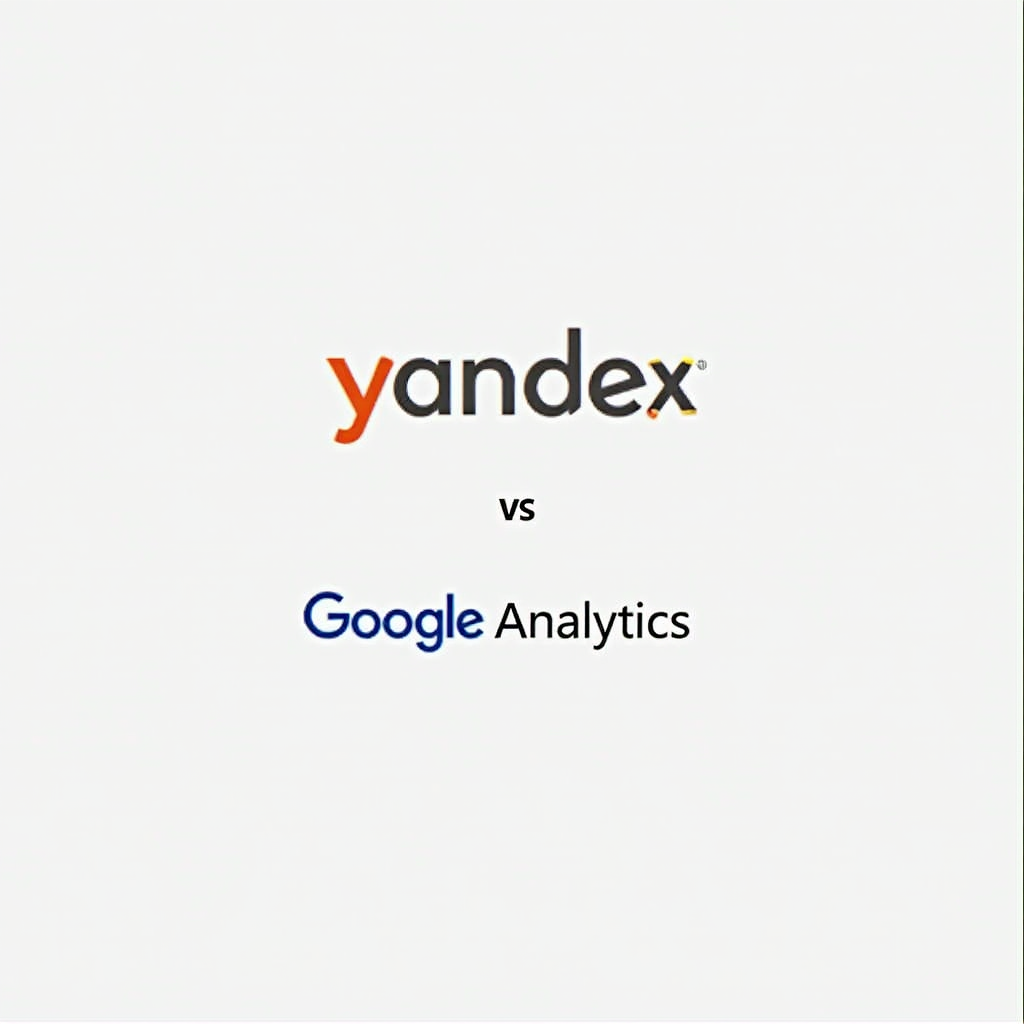Web analytics refers to the measurement, collection, analysis, and reporting of data regarding website usage. This practice has become a fundamental component in the field of digital marketing as it provides insights into user behavior, preferences, and the overall effectiveness of online strategies. Businesses leverage web analytics tools to comprehend how visitors interact with their websites, enabling them to identify areas for improvement and optimize their online presence.
Among the available tools, Google Analytics and Yandex Metrics stand out as two prominent platforms that offer robust analytics solutions. Both tools facilitate the tracking of various metrics, such as page views, bounce rates, and conversion rates, which are crucial for assessing website performance. The ability to gather and interpret such data empowers businesses to make informed decisions, tailor their marketing strategies, and enhance user experiences.
The importance of utilizing web analytics cannot be overstated, particularly in today’s digital landscape where competition is fierce. Understanding user behavior through these analytics platforms aids organizations in pinpointing their target audience, analyzing traffic sources, and determining the effectiveness of their online campaigns. As businesses investigate the options available, they may find themselves pondering what better Google Analytics or Yandex Metrics truly offers in terms of features, usability, and overall business impact.
Ultimately, the choice between these two powerful tools boils down to the specific needs and goals of the business. In recognizing the crucial role of web analytics in strengthening online strategies, companies can significantly enhance their operational performance by effectively leveraging the insights provided by either Google Analytics or Yandex Metrics.
Table of Contents
Overview of Google Analytics
Google Analytics is a robust web analytics service that provides businesses with comprehensive tracking and reporting capabilities. Launched in 2005, it has become a staple in the analytics landscape, helping organizations understand user behavior on their websites and mobile applications. One of the standout features of Google Analytics is its ability to track interactions, which allows businesses to gather data on page views, time spent on site, and conversion rates. This extensive tracking enables companies to identify trends, evaluate the effectiveness of marketing campaigns, and optimize user experience.
One of the key strengths of Google Analytics is its user-friendly interface, which makes it accessible even for individuals without a technical background. The platform provides a wealth of pre-built reports that can be easily customized, thus facilitating quick data analysis. Additionally, Google Analytics offers the flexibility to set up custom reports tailored to specific business needs, enhancing the analytical capabilities for users seeking deeper insights.
Integration is another significant advantage of Google Analytics. The platform can seamlessly connect with various Google products, such as Google Ads and Google Search Console, allowing businesses to pool their data for a more comprehensive understanding of their online presence. Moreover, it supports various third-party applications, enabling users to enhance their data analysis with additional tools and features. This compatibility and integration capability make Google Analytics a preferred choice among marketers seeking to leverage data for informed decision-making.
In light of its diverse features, ease of use, and widespread adoption, it is not surprising that Google Analytics is deemed a key player in the field of web analytics. Its ability to deliver meaningful insights and drive data-driven strategies solidifies its position as an essential resource for businesses aiming to enhance their online performance.
Overview of Yandex Metrics
Yandex Metrics is a powerful web analytics tool developed by Yandex, a Russian multinational corporation specializing in Internet-related products and services. As an effective counterpart to Google Analytics, Yandex Metrics offers a range of features that cater specifically to the needs of businesses operating in the Russian market. Its functionality is primarily focused on providing detailed insights into website performance, user behavior, and traffic sources, making it an essential resource for businesses looking to optimize their online presence.
One of the standout features of Yandex Metrics is its ability to track user interactions on a granular level. The platform provides detailed reports regarding user engagement, bounce rates, and session durations, which are crucial for understanding how visitors interact with a website. Additionally, Yandex Metrics offers advanced segmentation capabilities, allowing businesses to analyze visitor behavior based on various criteria such as geographic location, traffic source, and device type. This enables companies to tailor their marketing strategies more effectively to reach their target audiences.
In comparison to Google Analytics, Yandex Metrics excels in providing insights that are particularly relevant to Russian users. It incorporates local search behavior trends, which can significantly enhance a business’s ability to adapt to the local market. Furthermore, Yandex Metrics includes user-friendly visualizations that simplify the interpretation of complex data, making it accessible even for those with limited technical expertise.
Moreover, Yandex Metrics allows users to set up custom goals and conversions, facilitating the tracking of specific actions that matter most to a business. This level of customization helps organizations assess their digital marketing efforts accurately and make informed decisions based on actionable insights. With its robust capabilities and localized focus, Yandex Metrics stands out as a valuable asset alongside Google Analytics for businesses aiming to enhance their analytical frameworks in the increasingly competitive Russian online landscape.
Key Differences : Google Analytics or Yandex Metrics
When evaluating analytics platforms for your business, understanding the key differences between Google Analytics and Yandex Metrics is crucial. Each tool offers distinct features that cater to specific user needs and comprehension of web performance.
One major difference lies in the metrics tracked by each platform. Google Analytics primarily focuses on user behavior, engagement rates, and traffic sources. It excels in providing comprehensive insights into user journeys, conversion tracking, and e-commerce analytics. In contrast, Yandex Metrics places a strong emphasis on site performance metrics, such as page load times and user interactions, making it an attractive option for businesses prioritizing site optimization.
Another notable distinction is the user interface. Google Analytics presents a more complex and detailed dashboard, which can initially overwhelm new users but offers extensive customization options. Yandex Metrics, however, is renowned for its straightforward and user-friendly interface, leading to an easier learning curve for beginners. The simplicity of Yandex Metrics makes it particularly appealing to those who seek a quick overview without the intricate details.
Reporting capabilities also vary significantly. Google Analytics allows for the generation of highly customizable reports and in-depth analysis of data segmentation. This feature is essential for businesses that utilize advanced marketing strategies. On the other hand, Yandex Metrics provides automatic report generation tailored to specific goals, which streamlines the reporting process and can save time for users who need regular insights.
In conclusion, the choice between Google Analytics and Yandex Metrics should be guided by your business’s specific needs, focusing on the metrics that matter most to your objectives, the interface that best suits your team’s expertise, and the reporting capabilities that enhance your decision-making process.
Which Tool is More User-Friendly?
When comparing the user-friendliness of Google Analytics and Yandex Metrics, several factors come into play: onboarding process, learning curve, and the availability of support resources. Both tools aim to provide valuable insights for businesses, yet they vary in their user interface and overall accessibility.
Google Analytics is known for its comprehensive onboarding process, which includes informative tutorials that guide users through the initial setup. The platform offers various resources, such as detailed documentation and a vibrant community forum, which can be instrumental for new users seeking assistance. However, for those unfamiliar with analytics, the sheer volume of metrics and dimensions can feel overwhelming. User testimonials often cite a steep learning curve, suggesting that initial navigation may require dedicated time and effort to master.
On the other hand, Yandex Metrics presents a more simplified interface. Users frequently praise its intuitive design, which allows for quicker access to essential features. The onboarding process is also straightforward, providing a more accessible entry point for businesses looking to analyze their web traffic without extensive prior knowledge. Nevertheless, some users report limited documentation compared to Google Analytics, which could hinder advanced users seeking deeper insights. The overall consensus among Yandex Metrics users is that its ease-of-use allows businesses to promptly harness the platform’s capabilities.
Ultimately, the choice between Google Analytics and Yandex Metrics hinges on individual preferences. Businesses that value comprehensive support and a wealth of documentation may lean toward Google Analytics. Conversely, those prioritizing simplicity and ease of use might prefer Yandex Metrics. Each tool has its strengths and weaknesses, and understanding them will help businesses select the platform that best aligns with their needs.
Pricing Structure: Google Analytics vs. Yandex Metrics
When analyzing the pricing structures of Google Analytics and Yandex Metrics, it is essential to understand how these models cater to businesses of varying sizes and needs. Google Analytics offers a robust free version, allowing small to medium-sized businesses to harness powerful data insights without incurring any costs. This version provides essential features such as real-time analytics, audience insights, and basic reporting tools. For larger enterprises requiring advanced functionalities, Google Analytics 360 is available, which comes with a premium price tag that can reach up to $150,000 per year. This comprehensive package includes additional features, dedicated support, and increased data limits, making it suitable for organizations focused on extensive analytics needs.
In contrast, Yandex Metrics also presents a free and easy-to-use option for businesses. This platform provides features similar to those in Google Analytics, including traffic analysis, visitor segmentation, and goal tracking. As with Google, the free version is quite sufficient for small enterprises that seek to leverage web analytics without financial commitment. However, Yandex Metrics does not have a premium version comparable to Google Analytics 360, which means enterprises needing advanced features are typically required to explore third-party integrations or tools that can offer added functionality.
The accessibility of these tools heavily depends on their pricing models. While both Google Analytics and Yandex Metrics offer free versions that cater to the needs of small businesses, the more advanced features of Google Analytics can become a significant investment for larger enterprises. Thus, businesses must evaluate their analytical requirements against their budgetary constraints when choosing between these two platforms. Ultimately, the decision should align with the business’s growth strategy and the complexity of the data insights it wishes to obtain.
Best Use Cases for Google Analytics
Google Analytics emerges as a powerful analytics tool that businesses can leverage to gain actionable insights and enhance their performance in various scenarios. One prime use case is e-commerce tracking. Retail businesses utilize Google Analytics to monitor user behavior across their online shops. By analyzing key metrics such as conversion rates, average order value, and traffic sources, businesses can effectively identify which marketing strategies yield the best results. For instance, a leading online retailer boosted its sales by 25% after utilizing Google Analytics to refine its ad targeting based on shopper behavior insights.
Another significant application of Google Analytics is in content strategy development. Media companies and blogs can measure user interaction with their content, tracking metrics like page views, bounce rates, and time spent on pages. By understanding which articles or topics resonate with their audience, they can tailor content more strategically. A noteworthy example includes a lifestyle blog that increased its readership by 40% after using Google Analytics to analyze popular posts and optimize future content accordingly.
Furthermore, Google Analytics proves valuable for enhancing user experience on websites. Businesses can use funnel visualization tools to pinpoint where users drop off in the conversion process. This insight allows companies to make necessary adjustments to their landing pages, improving user flow. A case study of a SaaS company showcases its success after identifying high drop-off rates on a specific page, leading to a redesign that resulted in a 15% increase in trial sign-ups.
In addition to these examples, Google Analytics can also assist businesses in identifying their audience demographics and interests. This is particularly critical for segmenting marketing campaigns. By leveraging this data, organizations can tailor their messaging and product offerings, thereby increasing customer engagement and satisfaction. Overall, these scenarios illustrate how Google Analytics can be effectively utilized to optimize various aspects of a business strategy.
Best Use Cases for Yandex Metrics
Yandex Metrics is an analytics tool that excels in specific scenarios, particularly for businesses aiming to engage the Russian-speaking market. One of its primary advantages lies in its deep integration with other Yandex services, which can be particularly beneficial for organizations that rely on Yandex’s ecosystem, including Yandex Advertising and Yandex.Direct. Companies that focus on digital marketing within Russia and neighboring countries should consider Yandex Metrics for its localized insights and features tailored to these audiences.
In terms of usability, Yandex Metrics offers a user-friendly interface that provides valuable real-time analytics. This is essential for businesses that need immediate insights to inform their strategy. If your company operates primarily through a website and directly engages users online, Yandex Metrics can provide extensive data about user behavior that is especially relevant for enhancing your web presence in the Russian digital landscape.
Furthermore, companies that have a strong focus on localized content will benefit from Yandex Metrics’ ability to analyze demographic information specific to Russian users. It allows businesses to tailor their offerings more effectively to meet the unique preferences and behaviors of their target audience. Businesses that engage with customers through multiple channels, such as social media, should also leverage Yandex Metrics for comprehensive cross-channel analytics. The tool can help track how users interact with various platforms, making it easier to gauge the effectiveness of marketing campaigns geared towards Russian-speaking audiences.
Finally, businesses with a significant mobile user base should consider Yandex Metrics, noted for its clear mobile analytics capabilities. It assists companies in understanding how mobile users engage with their content, enabling optimization for mobile-friendly experiences. By focusing on these aspects, companies targeting the Russian market will find that Yandex Metrics is a powerful ally in their digital strategy.
Conclusion: Choosing the Right Analytics Tool
In the ever-evolving landscape of digital marketing and online business management, selecting the appropriate analytics tool is crucial for sustained growth and performance optimization. Both Google Analytics and Yandex Metrics offer robust features that cater to various business needs, yet each comes with distinct advantages that may resonate differently depending on the target audience and geographic focus.
Google Analytics is widely acknowledged for its user-friendly interface and comprehensive suite of tools designed for businesses aiming to understand user engagement, conversion paths, and overall site performance. Its integration capabilities with other Google services such as AdWords enhance its utility for organizations heavily invested in online advertising. Furthermore, the rich ecosystem of resources and community support surrounding Google Analytics contributes to its robust appeal.
On the other hand, Yandex Metrics provides unique features that can be particularly beneficial for businesses operating in or targeting Eastern European markets. Its strength lies in advanced segmentation, detailed traffic sources analysis, and user behavior metrics that reflect local preferences and standards. For companies looking to engage with Russian-speaking users, the insights offered by Yandex Metrics could significantly enhance marketing strategies and customer interaction.
Ultimately, the choice between Google Analytics and Yandex Metrics should be informed by specific business objectives, audience demographics, and marketing strategies. Companies need to carefully evaluate their operational context, potential for market reach, and analytical needs before making a decision. A thoughtful approach to selecting the right tool can lead to enhanced data-driven strategies that propel a business forward in a competitive online environment.










